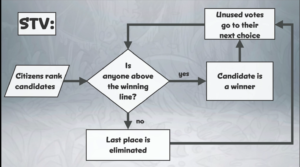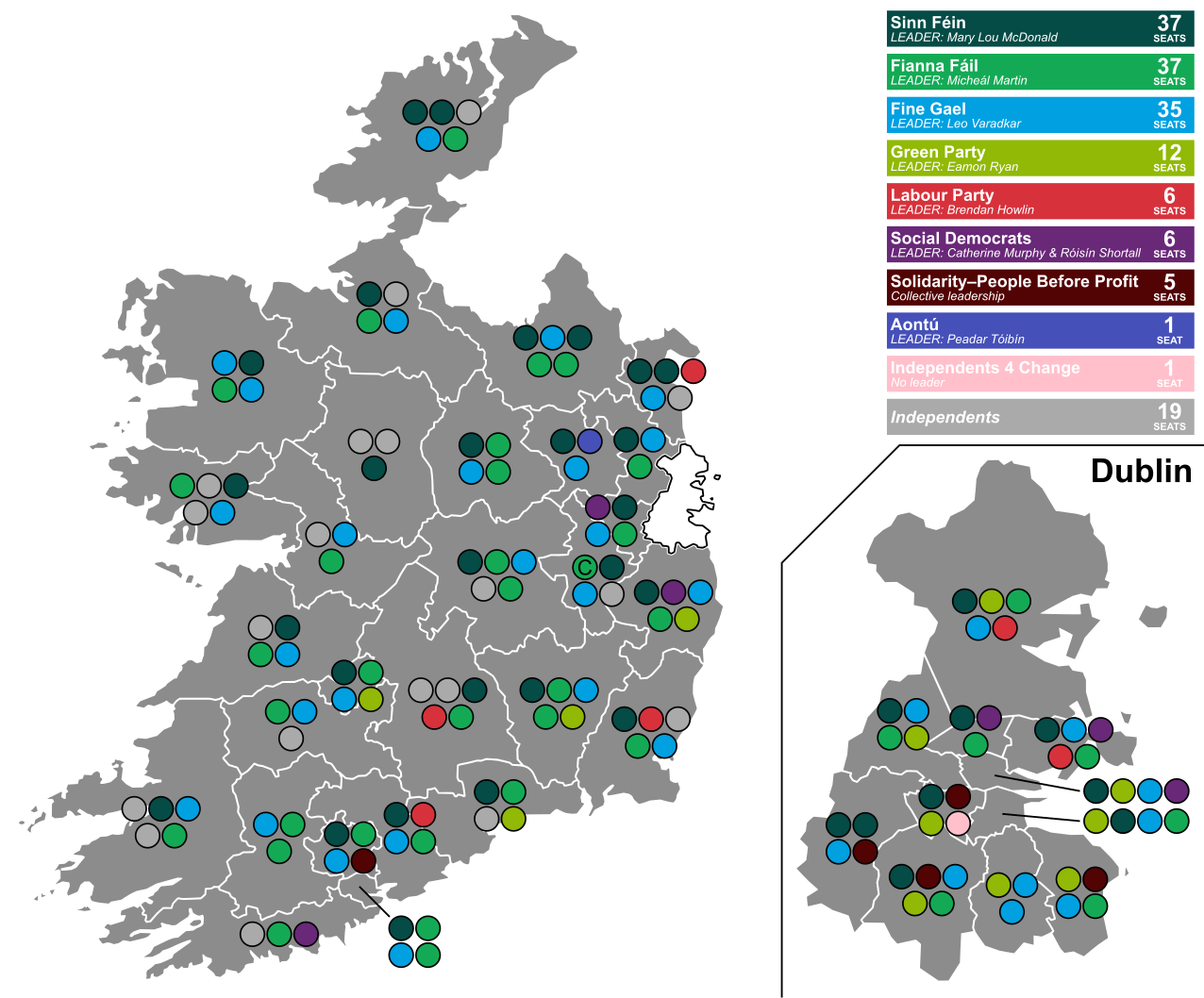By Dan Sally & Nathan Lockwood
Gerrymandering is again a point of discussion as states redraw congressional boundaries following the 2020 Census. Just two years prior in 2019, the Supreme Court decided on the constitutionality of gerrymandering in Rucho v Common Cause. The case argued that the congressional maps of Maryland and North Carolina were carved in a way that negated a significant percentage of votes and violated the equal protection clause in the Constitution.
Both states had a long history of creative redistricting, with one district in North Carolina nicknamed “The Snake” and a Maryland district described as “a broken winged pterodactyl”. Just a year prior to the court’s ruling, one-third of Maryland voters cast ballots for Republicans, yet the party won only one of the state’s eight congressional seats. In North Carolina, Democrats took 50 percent of the popular vote but only won 25 percent of the state’s delegation.
In a 5-4 decision, the Court ruled that the Constitution granted the power to carve congressional districts to the states and overturned all prior rulings in the lower court.
This has led to a number of proposed reforms gaining traction—from computer-aided congressional maps to independent redistricting commissions. The Fair Representation Act (HR 3863) takes the process a step further by moving from the “winner-take-all” scenario of single-member districts to one with multi-member districts where representatives are more accurately allocated according to the popular vote.
“Winner-take-all” elections create “losers” and are vulnerable to gerrymandering
Gerrymandering is so effective because of the way we elect our representatives. In “winner-take-all” elections, with our traditional “pick-one” ballots, a plurality (the candidate with the most votes, but not necessarily a majority) determines who represents the district, or with single-winner ranked choice voting, a majority of voters make that determination.
While on the face of it, that sounds reasonable, the result that we take for granted is that all the voters who did not vote for the winner are not represented by someone of their choosing. That number of voters effectively left out of the democratic process is often close to 50 percent — and at times even more. But the real ugliness appears when you look at what is happening across districts.
Even with fair districting and no scheming politicians manipulating district lines, let’s say you have a political minority that lives spread out, constituting 40 percent of the population across each of say, 5 districts.
On election day, that political minority will lose the elections in all five districts, winning zero representatives, with the majority political group winning all five. Fairness would seem to dictate that 40 percent of the population would get 40 percent of the representatives—2 of 5, but that is not what happens because of the rules.
Gerrymandering gets involved when politicians—or political parties—seek to alter district lines to their favor. Here’s a great gerrymandering explainer in the New York Times. In our example, we talked about a minority group “evenly distributed” across reasonably drawn districts. With gerrymandering, though, you can “pack” like-minded voters into fewer districts to make them win fewer seats, or you can “crack” groups of voters apart to make sure they don’t win seats. Party operatives don’t have to move the voters — they can just move the district lines. It’s often referred to as “politicians picking their voters”, instead of the reverse, the democratic norm of voters choosing politicians to represent them, as we expect.
So back to our example, if our minority voters were not evenly geographically distributed and happened to form a majority in one district, lines could be redrawn to split that majority and prevent them from winning any seats. A common use of gerrymandering is to “crack” and “pack” states with districts where elections could be competitive—nearly 50/50 split, so that instead of splitting the seats, one party reliably wins, say 70-80 percent—far more than their support merits.
The big takeaways here are:
Single-member districts have losers built into them—when the winner takes all, the loser gets nothing. Maybe we should call them “Loser-gets-nothing” districts!
Gerrymandering makes the problem worse by shifting the lines around to maximize winners for one side and maximize losers for the other.
RCV, meet Proportional Ranked Choice Voting
If you’re reading this article, you most likely have some level of familiarity with ranked choice voting. With RCV, voters rank their candidates in order of preference. If no candidate receives over 50 percent of the vote after the first choices are counted, contestants with the least support are eliminated and their supporters’ votes are allocated to their next choice.
The Fair Representation Act uses a system of proportional ranked choice voting, or PRCV, which allocates votes proportionally to elect the candidates.
Just like with RCV, voters rank their candidates in order of preference. But Proportional Ranked Choice Voting has these two additional tweaks:
A group of “single-member” districts where voters elect one representative are combined to form a multi-member district, where voters elect multiple (usually 3-5) representatives.
Instead of having to win a majority of votes (>50%) in a smaller single member district, a candidate can win a seat by earning support of a much smaller percentage of voters—but inside the much larger combined district.
So instead of greater than 50 percent in a single member district, in a five member district, a candidate can win with about 17 percent. It turns out, to win that lower percentage—17 percent, the candidate will actually need more votes, but critically, it is a much lower percentage of votes in the larger combined district.
So why this adjustment?
The smaller percentage needed to win means that minority political groups (with a smaller percentage of the vote) can now win representation.
Remember our minority political group that was 40 percent in each of five districts, losing all the time? Now instead of getting nothing for their votes, they can combine their votes in the big district with no little district lines stopping them. With their 40 percent of total votes they can “buy” two of those seats at 17 percent a pop—40 percent of the seats. The majority will get their fair share of 60 percent, the remaining 3 seats.
Here’s a classic video that summarizes the benefits:
A “common cents” money perspective
Here’s another way of looking at what is going on:
- In the single-member majoritarian districts, in the extreme case, the majority political group was able to buy 100 percent of the five seats with 60 percent of the votes—a sweet deal!
- Meanwhile, the minority political group won ZERO of the seats with 40 percent of the vote—a total rip-off—wasted votes!
Under PRCV, there are much fewer wasted votes (no more rip-offs) and each seat costs more votes (no more “sweet deals”). The majority party no longer gets “cheap seats” for only a little more than 50 percent in each of five districts. They need to pay the full price of 17 percent per win in the combined five seat district. But these full price seats are now affordable to the minority political group who can “pool their votes” like money to let them buy the seats they deserve.
Another benefit is that each of these five representatives has a much larger mandate in terms of the number of voters they represent, and they are representing very few people “against their will.” How many people win representation with their vote? The level voter satisfaction is shown in the data from places that use PRCV.
In Cambridge, Massachusetts, which has used PRCV for 80 years, nearly every voter is represented by someone they voted for. PRCV in Cambridge is almost a “Guarantee” of representation.
In Cambridge, Massachusetts, under PRCV…
“From 1997 to 2017, an average of 77% of voters had their 1st choice elected, 91% had their 1st or 2nd choice elected, and a stunning 95% saw 1 of their top 3 candidates take office.”
In Some Cities, Most Voters Put Someone They Want On City Council—But Not Portland, Kristin Eberhard and Jay Lee
The PRCV counting nitty-gritty details
Under PRCV, voters rank their ballots, just like under single winner RCV. In both single winner RCV and PRCV, candidates with the least support are eliminated and their votes transferred to their supporters’ next choices. This is critical to avoid “vote splitting” when multiple candidates with similar views run.
There are really two differences with PRCV ballot counting.
1.) Lower percentage needed to win a seat
As mentioned, the threshold to win gets lowered—it’s not >50 percent. The percentage is adjusted based on the number of members in the district. The formula for lowering that threshold is the 100 percent divided by (the number of seats elected in the district + 1). You need to get just one vote greater than that percent to win. In a two seat district, a candidate needs 33 percent of the popular vote + 1 vote to take office. In a three seat district, that number is 25% +1. Why this exact formula? Mathematicians have determined it gives the most representative results.
2.) Re-allocate “extra” votes
So let’s go back to our imaginary district with one political group with a 60 percent majority of voters. They should get about 60 percent of the seats. To do that in a five member district, they would have to run at least three candidates to win three seats. Let’s say they did that. But what if all these voters rank the same candidate as their No. 1 ranking? Will the other two candidates be eliminated and they will only get one seat—just 20 percent?
The answer is “no” and the reason is that if that happened, that No. 1 candidate with 60 percent of the votes would be awarded her seat, but she only needed 17 percent for that. So to preserve her voters voting power, her supporters would have the “excess” portion of their one vote reallocated to count towards each of their next choices. In this case, that amount would be (60 minus 17 percent)/(60 percent) or about 72 percent of their vote that would be transferred. That is how the majority group would go on to win two more—for a total of 3 of 5 of the seats in the combined district and get fair representation. Why this exact method? Again, mathematicians.
Back to our “money” analogy, this “family” of like-minded voters is able to use these rankings so at the family picnic, they don’t all buy the potato salad—they do splitsies and some buy the hot dogs and some buy the apple pie.
From Politics in the Animal Kingdom: Single Transferable Vote by CGP Grey:

Here’s a great video with a cool Scottish accent that covers these details.
Wouldn’t this just result in megapartisan megadistricts?
Much, much less potential for gaming the system exists with PRCV — but there is still some. This is why The Fair Representation Act includes two additional provisions:
- Districts must be carved by an independent commission of 15 members, 5 Republican, 5 Democrats, and 5 independents.
- No district can be safe for any party, based on prior presidential vote totals.
In addition to the above, HR 3863 also includes provisions that ensure racial and ethnic minorities have a voice in the process and that municipalities, towns, and other communities of interest are kept whole.
Note the bigger the multi-member district, the less potential impact of foul-play through gerrymandering. It’s hard to cut out anyone by manipulating districts when in any district a group with 17 percent can have a voice.
What would this look like in practice?
The good news is that we already have systems using proportional representation worldwide to give us a feel for how this would look in action. Research shows governments that rank highest in terms of electoral transparency and voter satisfaction have systems of proportional representation.
Ireland uses PRCV. Here’s a map of its multi-member districts.
Map from 2020 Irish General Election, wikipedia. Map image by Erinthecute licensed under Creative Commons BY-SA 4.0.
If we take a closer look at how this would affect specific states, the results are surprising. FairVote, a non-partisan electoral reform organization, provided research showing how the congressional delegations of various states would change in a PRCV system.
Getting back to North Carolina, FairVote’s research shows a PRCV system would result in 5 Democrat seats, 5 Republicans, and three would be too competitive to call. In Maryland, Republicans would gain one seat and a third seat would be up for grabs.
That pterodactyl has taken its broken wing and learned to fly!
Here are a few other surprises from FairVote:
- In deep blue Massachusetts, Republicans would get 3 out of the state’s 9 representatives—3 more than they have now, and much more representative of the state’s 35 percent Republican leaning voters.
- Right-leaning Ohio, where a 50 percent share of the popular vote has given Republicans 75 percent of their congressional delegation, would elect 3 more Democrats and have 3 seats either competitive between both parties or open for a minor party candidate.
- Texas would add one more Democrat to their congressional delegation and open up 4 new competitive seats. It should be noted the Libertarian Party has a strong presence in this state and has already sent one of its party members to Congress, opening up the possibility for minor party participation in Congress.
- Similar to Texas, California’s Republicans would see 2 more members in Congress and have the opportunity to compete for 9 competitive seats.
But how does this get passed?
The more cynical answer would be “never,” but there’s more reason to be hopeful than you think. A recent poll by RepresentUS showed 90 percent of Americans oppose partisan gerrymandering, and the process proposed in HR 3863 results in a net wash in the partisan makeup of seats in the House, with the exception of more swing districts entering the mix.
Political environments such as the one we’re in now have also produced similarly radical reforms. For example, the 17th amendment providing for the direct election of senators and the 19th amendment which gave women the right to vote were both passed in a decade marked by a rising populist movement and anti-establishment candidates.
The key to both—and the key to meaningful redistricting reforms—is people organizing and taking action. FairVote provides some information on how to take action here, and Rank the Vote provides some ways to have an impact at the state level here.
However you choose to help, with 90 percent of voters behind you, you know you’ll have some company.
Dan Sally worked with digital marketing software firm, HubSpot, advising companies on how to grow their business via the web. Dan brings his passion for electoral reform, his knowledge of digital marketing to help Rank the Vote reach a wider audience online. Dan spent 8 years pursuing a career in stand-up comedy, appearing on Comedy Central and as a finalist in the Boston Comedy Festival.
Nathan Lockwood is Executive Director of Rank the Vote. He played a leading role in founding and growing Voter Choice Massachusetts both as the regional lead for Central Massachusetts and through various statewide roles. He also served on the board of directors of the Voter Choice Education Fund. Nathan was elected to the Town of Lunenburg, Massachusetts Planning Board and served from 2009 through 2015. His career in the software industry spanned 25 years and included engineering, design, and management roles. He holds a BA in Philosophy from Yale University.
The views and opinions expressed in this article are those of the authors and do not necessarily reflect the official policy or position of Rank the Vote, its members, supporters, funders, or affiliates.


